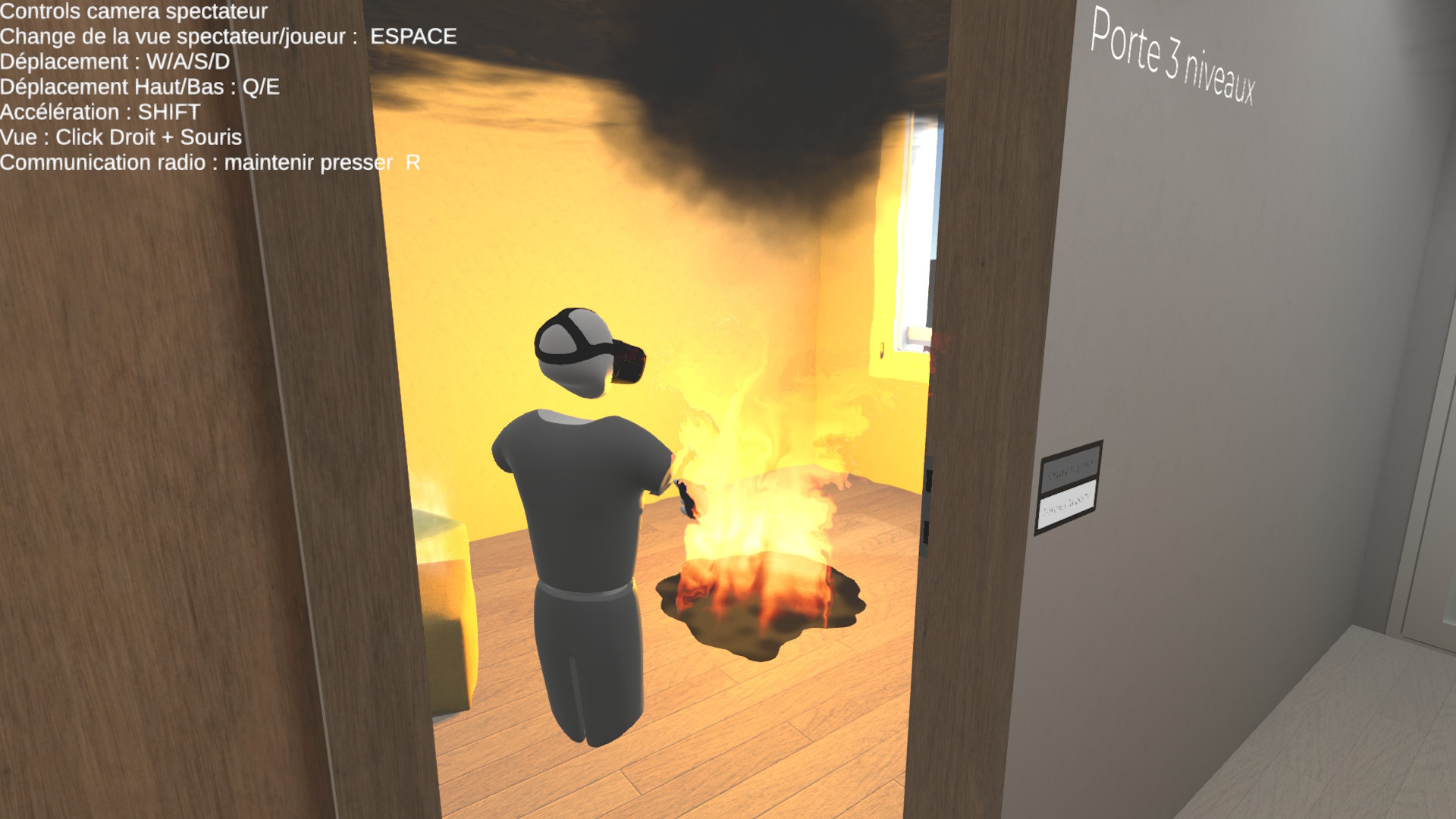Formation Pompier
Professional projects | | Links:

Overview
Type : Professional
Technology : Unity, HTC Vive
Platform : PC
Project
The primary objective of this project was to demonstrate to local firefighters the advantages of using Virtual Reality (VR) for training exercises.
My specific aim was to simulate a scenario where a firefighter arrives at an apartment with a room engulfed in flames behind a closed door. The firefighter navigates through the corridor and inspects the room by gently opening the door using its handle. This situation was designed to allow the firefighter to observe the progression of the fire inside the room.
To enable object interaction and movement in the VR environment, I utilized the VR Interaction Framework plugin. This project served as a testing ground for the plugin’s functionality for future applications and abstracts the platform to facilitate smoother development.
The plugin facilitated the swift setup of the character rig, incorporating movement through teleportation and interaction via hand movements.
Regarding the door interaction, users could either employ a small contextual interface positioned near the door or directly manipulate the door handle.
A key aspect emphasized in the project was achieving a realistic depiction of the fire. Initially considering volumetric rendering for the flames, I opted for the Fluid Flames plugin available on the asset store due to the complex setup and uncertain performance in VR. This plugin employs Navier-Stokes differential equations to authentically simulate the flow of fuel, heat, and oxygen within the environment, ensuring accuracy. The flames are presented on a 2D quad that consistently faces the camera, allowing for an immersive depiction of the fire.
To enhance realism, the smoke is generated through Unity’s particle system, with particles interacting with the ceiling, mimicking the buildup seen in actual fires. An added heat distortion effect, coupled with a custom shader, contributes to the authenticity of the visual experience.
Alongside the flames, furniture surrounding the fire is also affected by radiation and convection, indicated by smoke arising from the heated furniture. These smoke effects are achieved utilizing the particle system.
Initially designed for the Oculus Quest, the rendering process of the fire was too resource-intensive, affecting the desired framerate. Consequently, the Vive was employed, benefiting from a dedicated graphics card’s power. Additionally, it allows for a freely maneuverable camera, enabling a firefighter to observe the scene and keep track of the individual wearing the VR headset.
Moreover, a communication feature was integrated. A firefighter monitoring the operation from a computer can utilize a microphone to communicate with the person wearing the VR headset. A microphone input needs to be selected before launching the scene. Filter and distortion effects, along with walkie-talkie sound effects, were incorporated to enhance the realism of communication.
The project garnered success as the firefighters were impressed with the realistic portrayal of the fire and appreciated the attention to detail in the walkie-talkie feature. This experience convinced them of the efficacy of VR for training purposes.